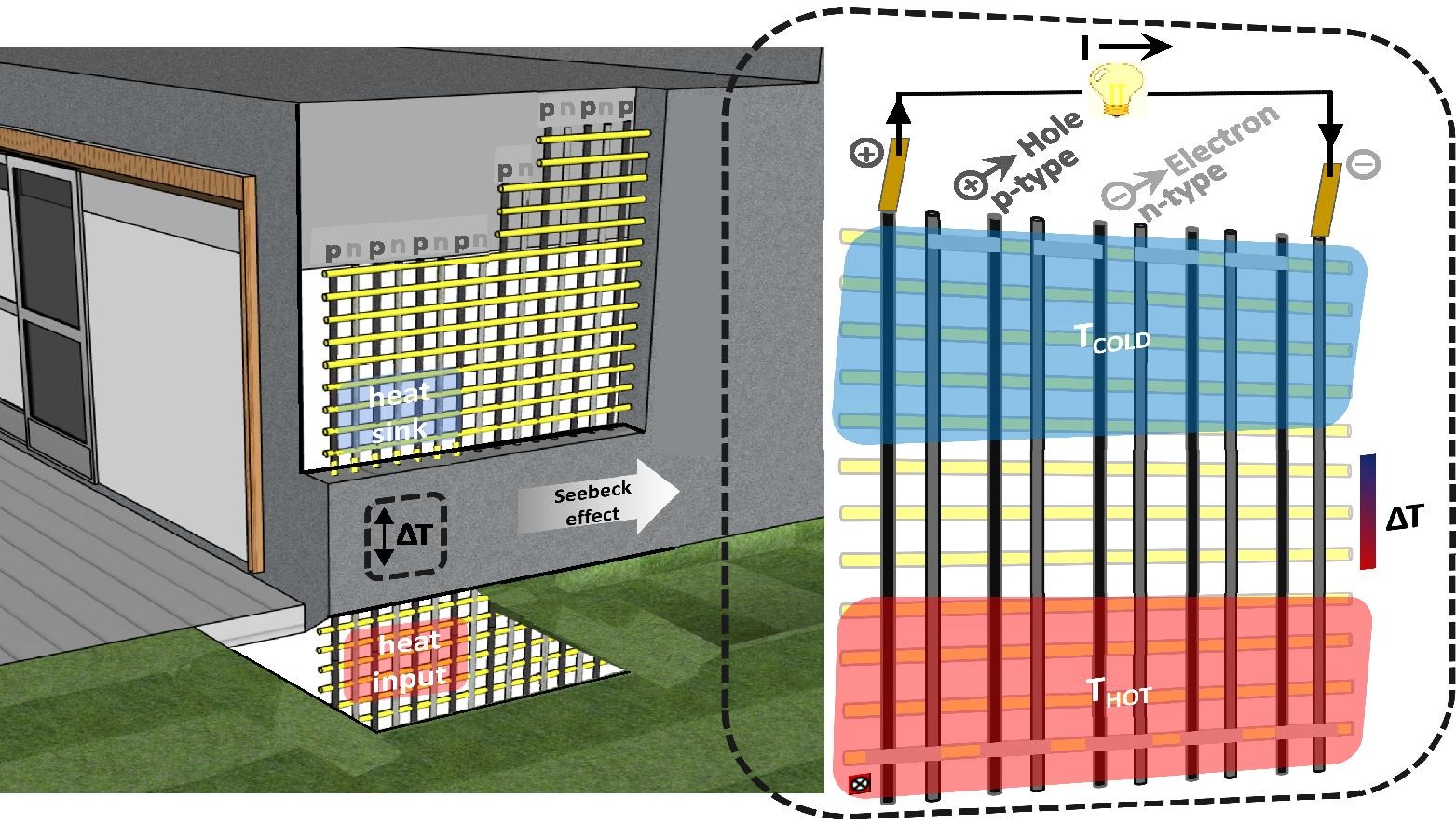This proof-of-concept study demonstrates for the first time the fabrication of a multifunctional reinforcing grid-building material within a thermoelectric element generator (TEG) configuration. Commercially available carbon fiber yarns, which possess inherent Seebeck coefficient (S) values of −2.5 μV/K (n-type) and +7.4 μV/K (p-type), were thoroughly investigated prior to their impregnation with a geopolymer (GP)-based suspension. The resulting hardened mineral-impregnated carbon-fiber (MCF) reinforcements were subsequently tested regarding their physicochemical and mechanical properties. Afterward, individual MCFs were employed as n- / p-type thermoelements to assemble a grid-like TEG consisting of five serially interconnected junctions. The TEG-enabled reinforcing grid exhibited a voltage output of 1.8 mV, corresponding to a generated power of 22.3 nW upon exposure to an in-plane temperature difference (ΔT) of 50 K. Multifunctional building materials are envisaged to exploit thermal gradients on a large-scale during their service lifetime, contributing towards zero energy consumption constructions.

This proof-of-concept study demonstrates for the first time the fabrication of a multifunctional reinforcing grid-building material within a thermoelectric element generator (TEG) configuration. Commercially available carbon fiber yarns, which possess inherent Seebeck coefficient (S) values of −2.5 μV/K (n-type) and +7.4 μV/K (p-type), were thoroughly investigated prior to their impregnation with a geopolymer (GP)-based suspension. The resulting hardened mineral-impregnated carbon-fiber (MCF) reinforcements were subsequently tested regarding their physicochemical and mechanical properties. Afterward, individual MCFs were employed as n- / p-type thermoelements to assemble a grid-like TEG consisting of five serially interconnected junctions. The TEG-enabled reinforcing grid exhibited a voltage output of 1.8 mV, corresponding to a generated power of 22.3 nW upon exposure to an in-plane temperature difference (ΔT) of 50 K. Multifunctional building materials are envisaged to exploit thermal gradients on a large-scale during their service lifetime, contributing towards zero energy consumption constructions.
